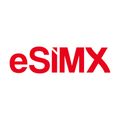airdatalink se especializa en soluciones eSIM asequibles y confiables, perfectas para mantenerse conectado mientras viaja. Con nuestro enfoque en brindar el mejor valor y servicio, puede explorar el mundo con confianza y facilidad.

airdatalink se especializa en soluciones eSIM asequibles y confiables, perfectas para mantenerse conectado mientras viaja. Con nuestro enfoque en brindar el mejor valor y servicio, puede explorar el mundo con confianza y facilidad.
Promocion / Codigo de Cupon
Planes de datos eSIM airdatalink para Suiza
Preguntas Frecuentes
¿Ofrece airdatalink una eSIM con datos ilimitados para Suiza?
No se ofrecen planes eSIM ilimitados por airdatalink para Suiza. El portafolio de airdatalink para Suiza consta de eSIM de datos fijos, incluyendo el Essential Europe eSIM y el Discover Europe eSIM, cada uno disponible en variantes de 30GB y 50GB y válido por 30 días.
Como airdatalink no ofrece opciones ilimitadas, los viajeros que necesiten grandes volúmenes de datos pueden elegir uno de los planes fijos de alta capacidad, como el 50GB Essential Europe eSIM por 22.68 USD o el 50GB Discover Europe eSIM por 30.56 USD. Estos planes pueden resultar más rentables para la mayoría de los usuarios, aunque no son ilimitados.
¿airdatalink ofrece eSIM de Suiza con número de teléfono y SMS?
Airdatalink no ofrece eSIM para Suiza que incluyan un número de teléfono o capacidades de SMS. El proveedor solo ofrece planes de eSIM de datos en Suiza. Los viajeros que necesiten voz o mensajería pueden usar aplicaciones VoIP como WhatsApp, Telegram o iMessage sobre la conexión de datos.
¿Cuántos planes de datos ofrece airdatalink para Suiza?
En Suiza, airdatalink ofrece 46 planes de datos multiclave. El rango de precios va desde aproximadamente $4.06 hasta $47.52, mientras que los límites de datos varían de 500 MB hasta 50 GB y la validez abarca de 5 a 90 días. Entre estos, 27 planes presentan un límite diario de datos, dando a los usuarios un límite diario de uso, mientras que 19 planes proporcionan una cantidad fija de datos para todo el período de validez, permitiendo una asignación única de datos independientemente del uso diario.
Resumen con Gen AI. Última actualización:




